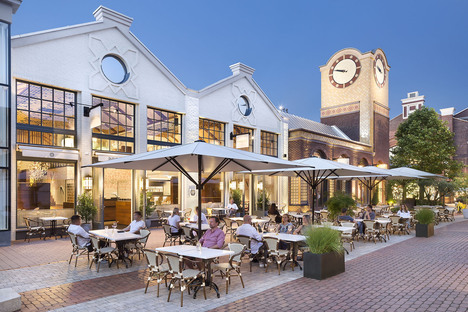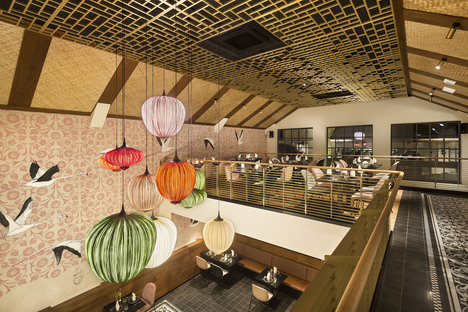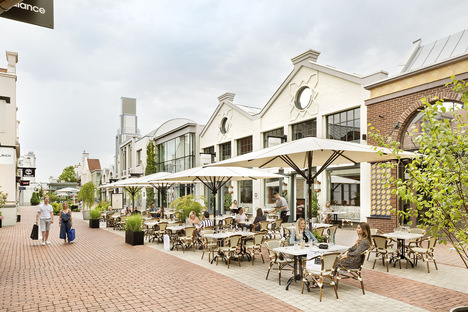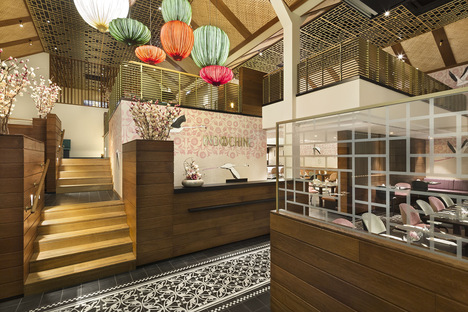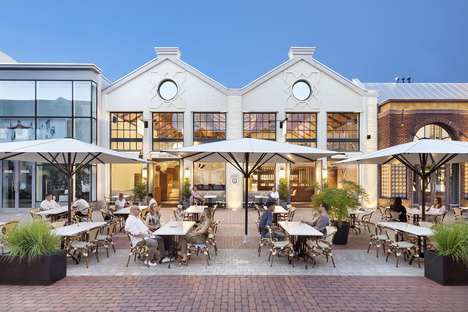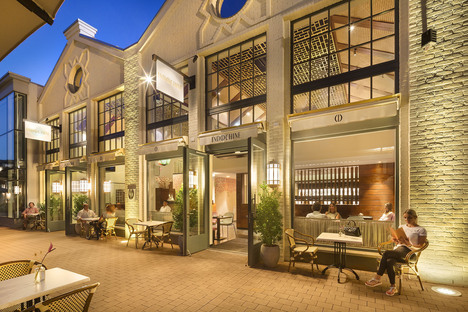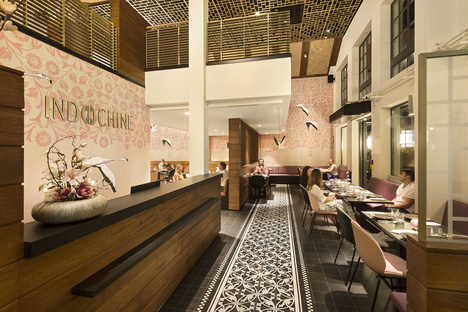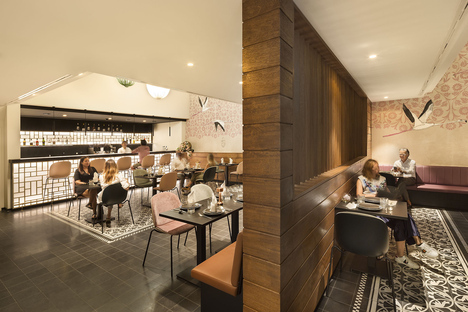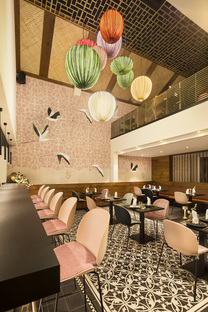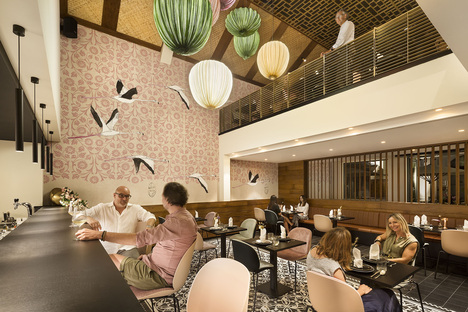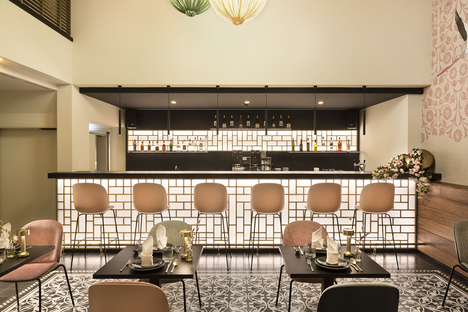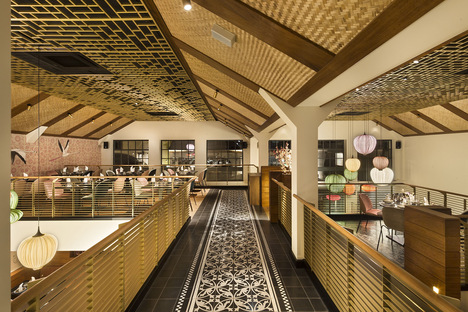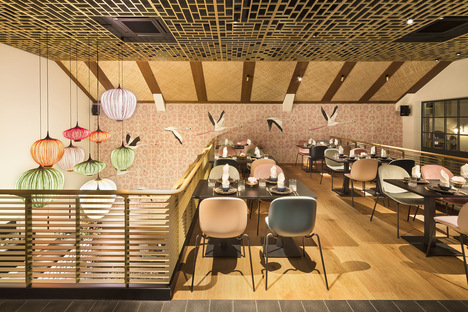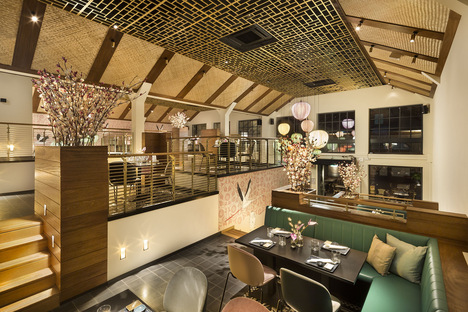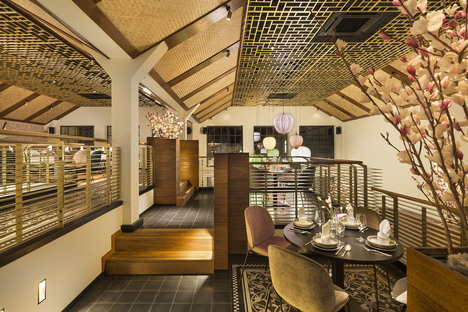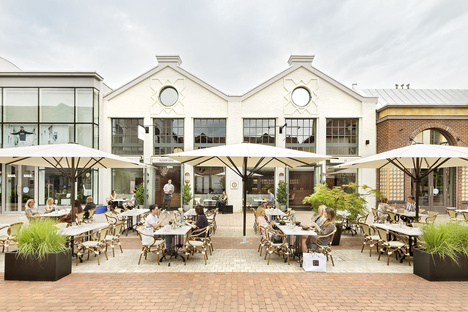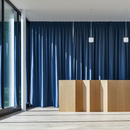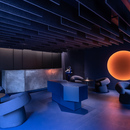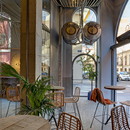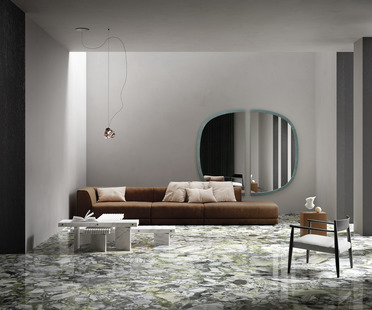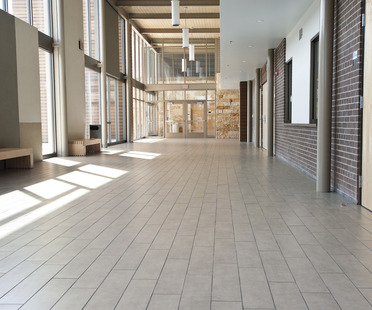30-07-2020
A restaurant with exotic flair, Indochine at Ingolstadt Village
- Blog
- Design
- A restaurant with exotic flair, Indochine at Ingolstadt Village
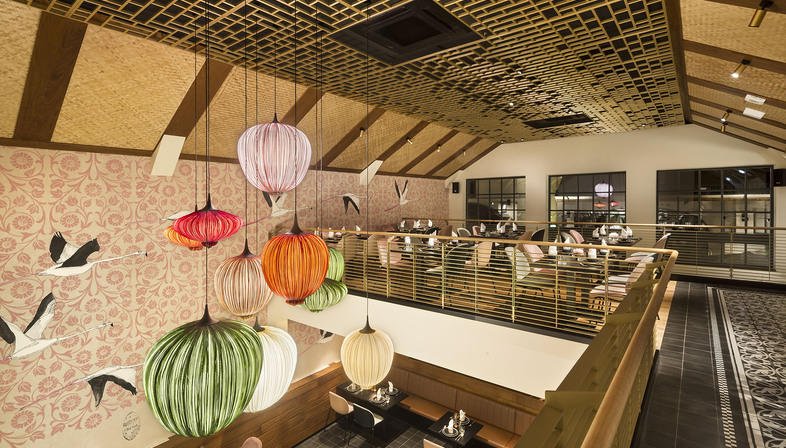 In German, there is an idiomatic expression, “Das Auge isst mit”, meaning that a meal is often more appetising if it looks good when presented to you. Something like a feast for the eyes, which can also be used to render the beauty of your dining venue. Not surprisingly then, restaurant owners and operators are attaching more and more importance to interior design, all the more so in visually striking contexts such as Ingolstadt Village, part of the Value Retail’s Bicester Village Shopping Collection, not far from Munich. A designer outlet with extremely high standards of quality, both in the shopping experience and the culinary offer, in architecture inspired by the tradition of the late 19th- and early 20th-century European textile mills and industrial estates. As such, the project is based on a make-believe foundation: the conversion of a historical textile mill “discovered” in central Bavaria. Ingolstadt Village maintains its industrial legibility while successfully operating as a retail outlet. This is all achieved through subtle changes of scale, which soften the factory-like repetition of the industrial-style volumes and forms.
In German, there is an idiomatic expression, “Das Auge isst mit”, meaning that a meal is often more appetising if it looks good when presented to you. Something like a feast for the eyes, which can also be used to render the beauty of your dining venue. Not surprisingly then, restaurant owners and operators are attaching more and more importance to interior design, all the more so in visually striking contexts such as Ingolstadt Village, part of the Value Retail’s Bicester Village Shopping Collection, not far from Munich. A designer outlet with extremely high standards of quality, both in the shopping experience and the culinary offer, in architecture inspired by the tradition of the late 19th- and early 20th-century European textile mills and industrial estates. As such, the project is based on a make-believe foundation: the conversion of a historical textile mill “discovered” in central Bavaria. Ingolstadt Village maintains its industrial legibility while successfully operating as a retail outlet. This is all achieved through subtle changes of scale, which soften the factory-like repetition of the industrial-style volumes and forms.In 2018, the architect Jürgen Haller - and his German-based studio - was commissioned to convert two boutiques into an Asian Fusion restaurant, called Indochine. It all needed to be of the same high design standards as the outlet, and at the same time respond to the desires of the Vietnamese clients who already owned the first Vietnamese restaurant in Munich, after arriving there many years ago as boat people. This term was, in fact, originally used to describe the refugees who escaped from Vietnam on any form of water vessel at the end of the Vietnam war in 1975.
For the interior design, Jürgen Haller and his team used the terraced rice paddies of Vietnam as the leitmotif of their project. Combining that concept with ornaments from the Far East and characteristic surfaces of Vietnam, they created an internal structure of different levels and viewpoints. This gives diners a new spatial experience every time they visit, rewarding their imagination. Some of the architectural solutions used include decorated concrete tiles that are a nod to the French colonial period and coloured street lamps, arranged in clusters, typical of South East Asia. Magnolias in oversized vases underscore the Asian atmosphere, as do the materials selected for the décor - teak coloured wood, soft, velveteen fabrics and bamboo mats, matched with brass-coloured metal frames on ceilings and handrails, easy to see in the photos taken by Ken Schluchtmann, including the explorable 3D overview. While all the plant engineering required to operate the venue has been elegantly concealed thanks to cutting-edge technological and design solutions.
Visitors who pop into the Indochine restaurant for a break from their shopping experience will also enjoy a “feast for the eyes”, in a visual and culinary journey to another culture. And it has been so successful at creating this experience, that the restaurant designed by Haller attracts diners from all over the region, not just visitors to Ingolstadt Village.
Christiane Bürklein
Project: Architekturbüro Haller
Location: Ingolstadt, Germany
Year: 2020
Images: Ken Schluchtmann - diephotodesigner.de










